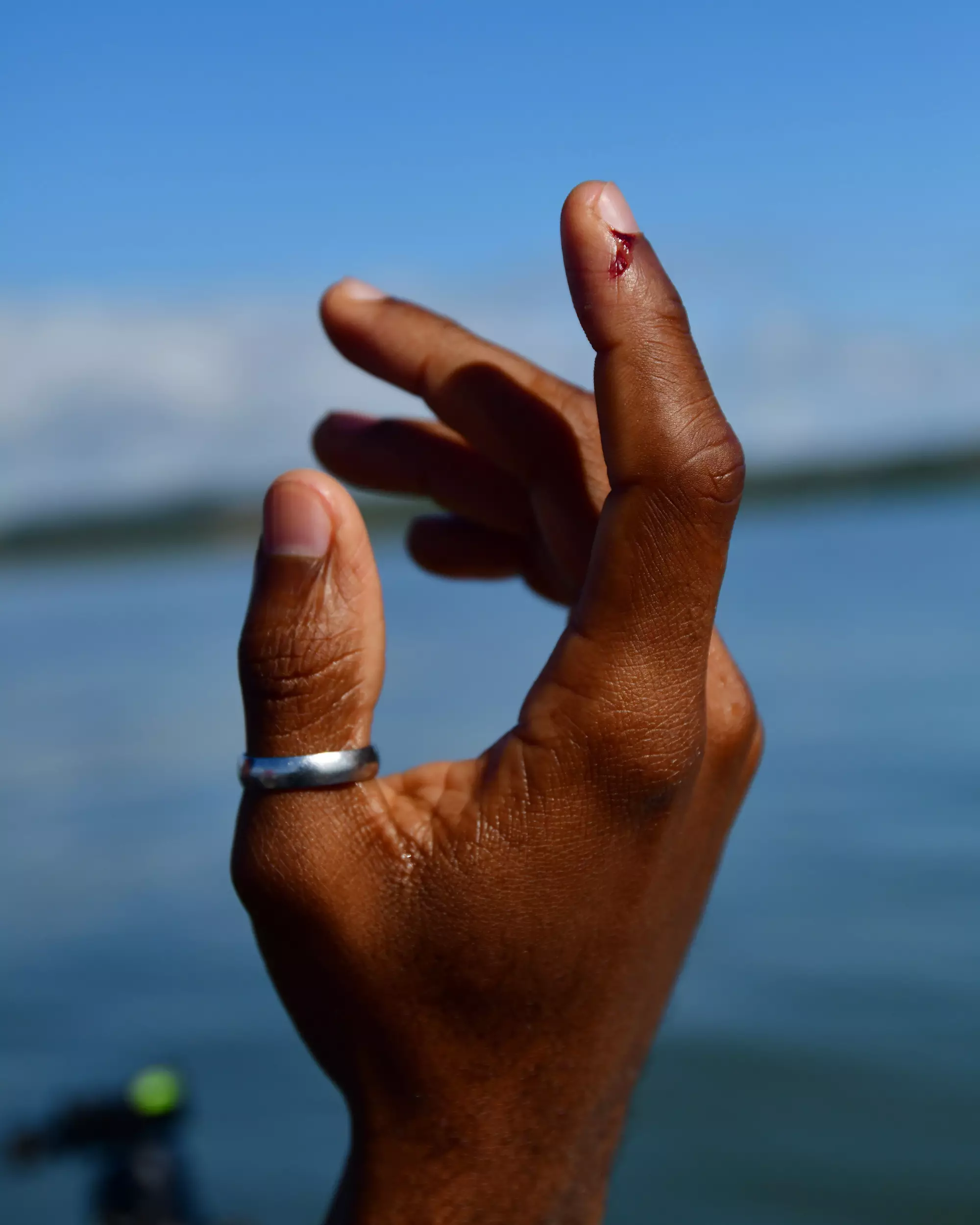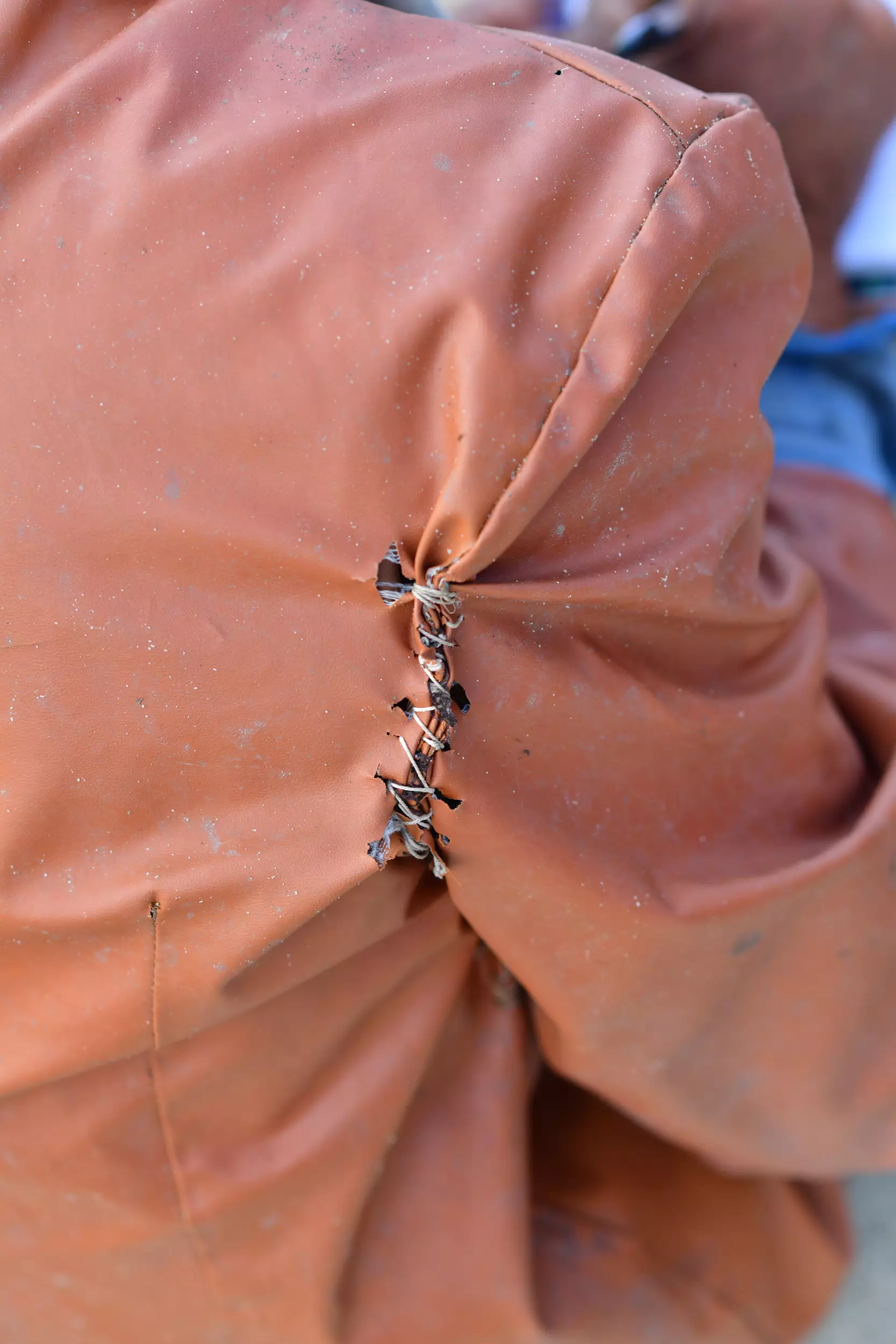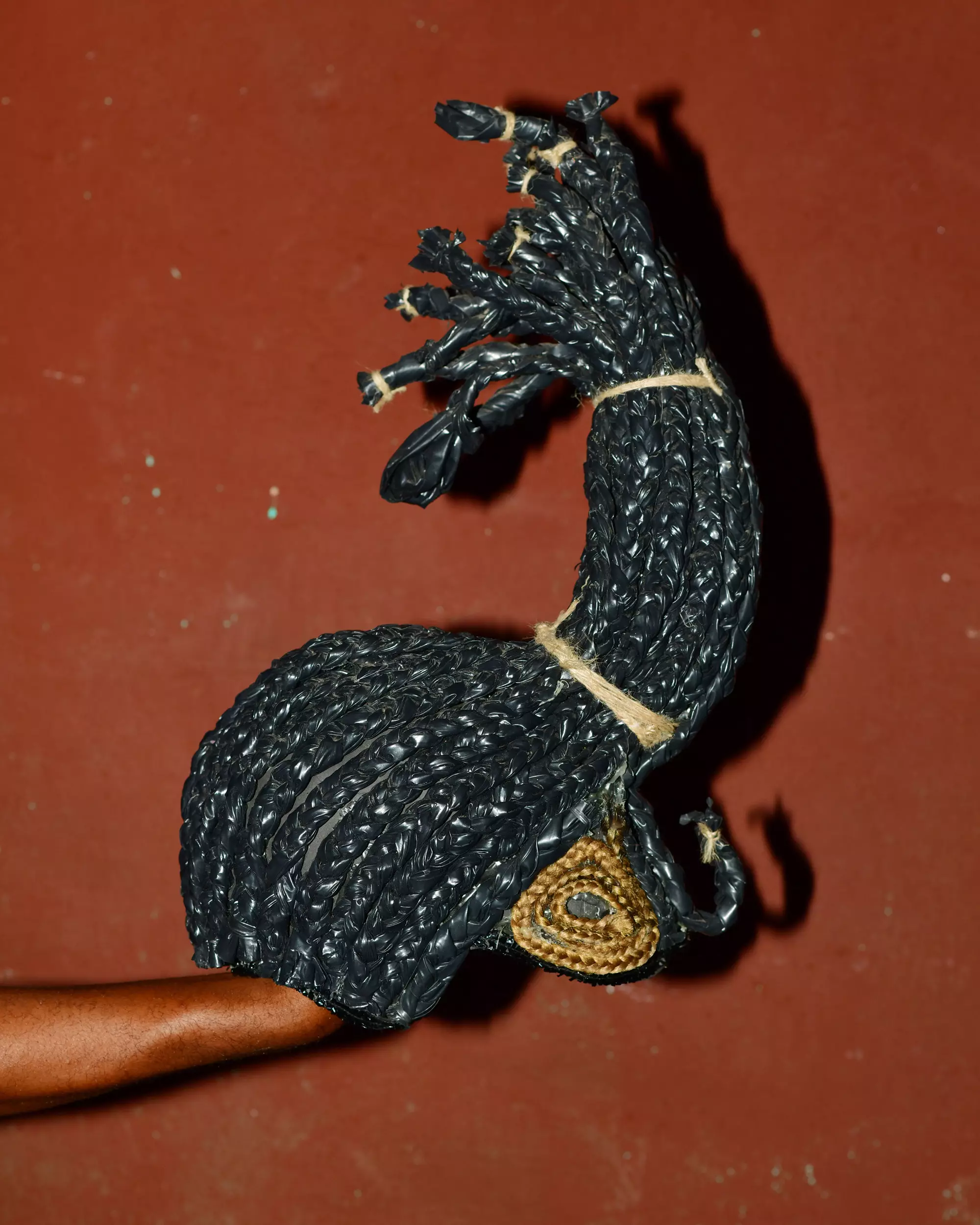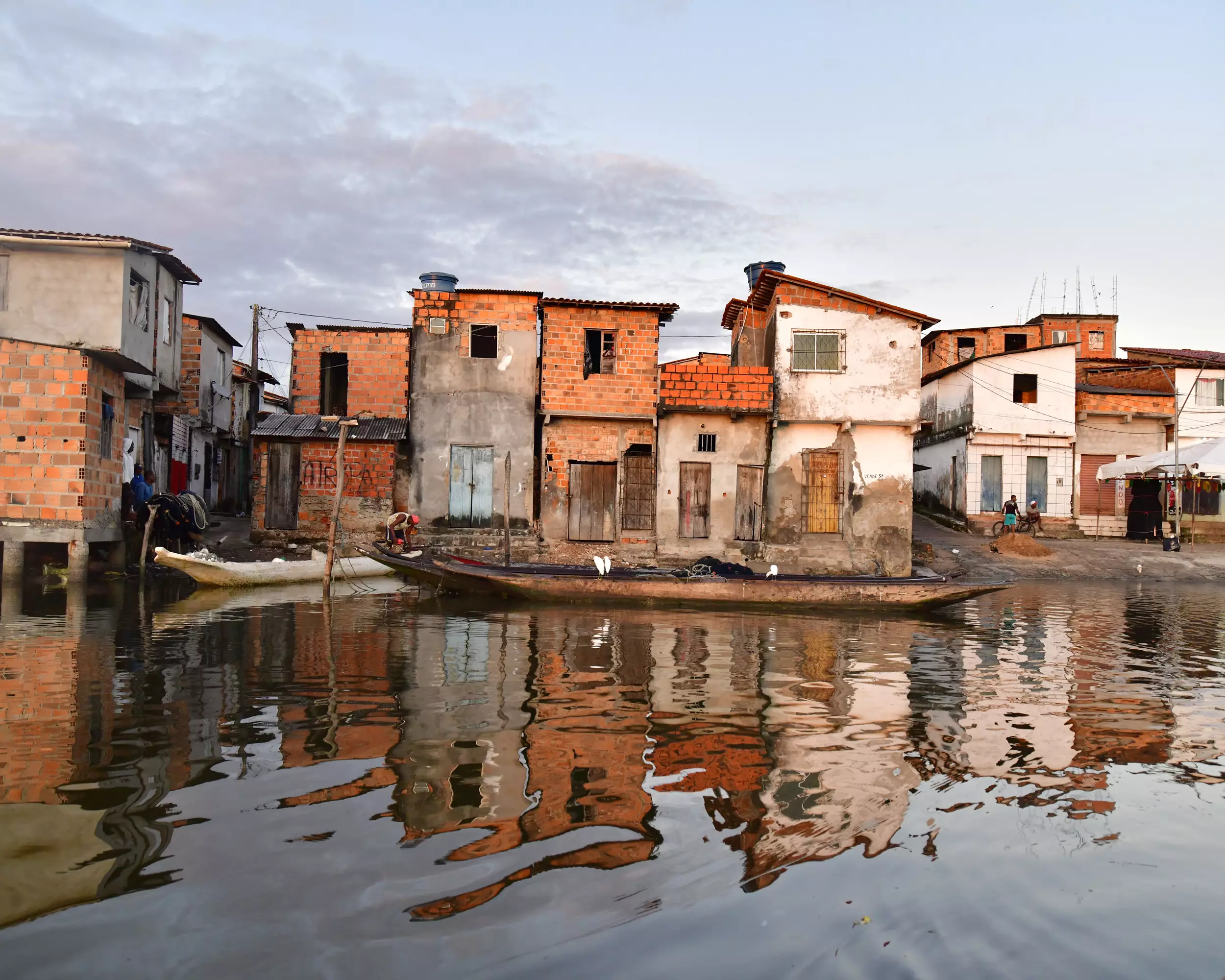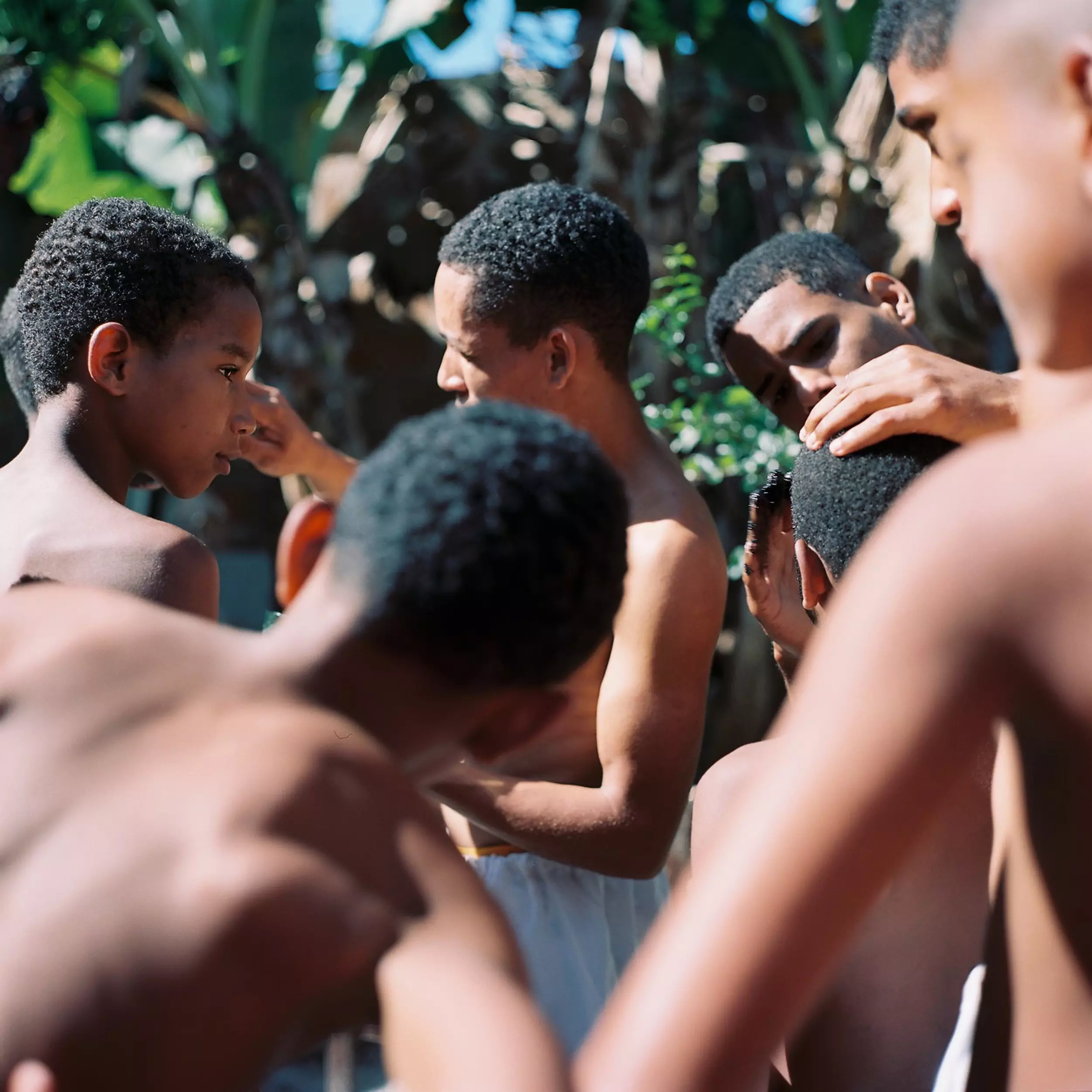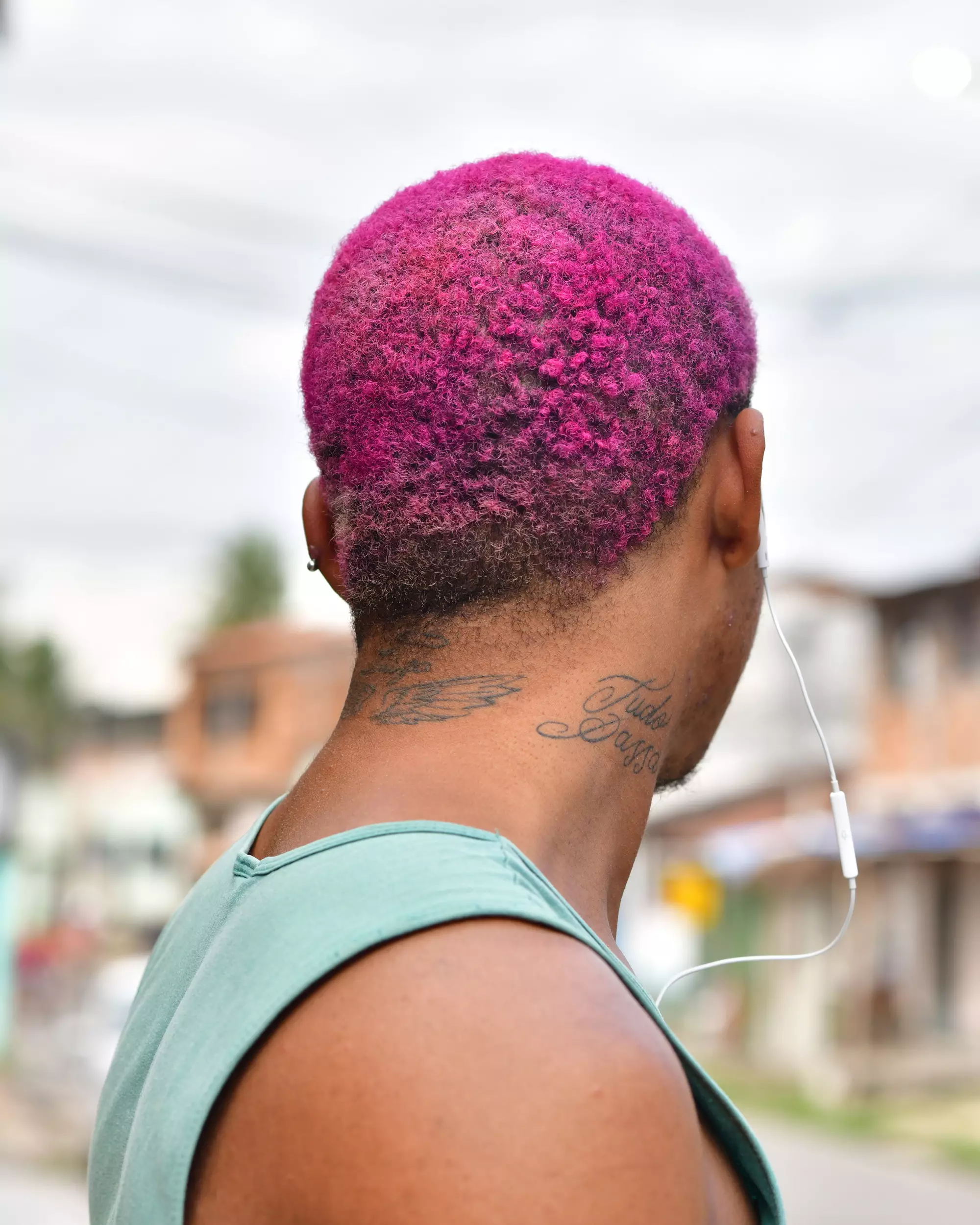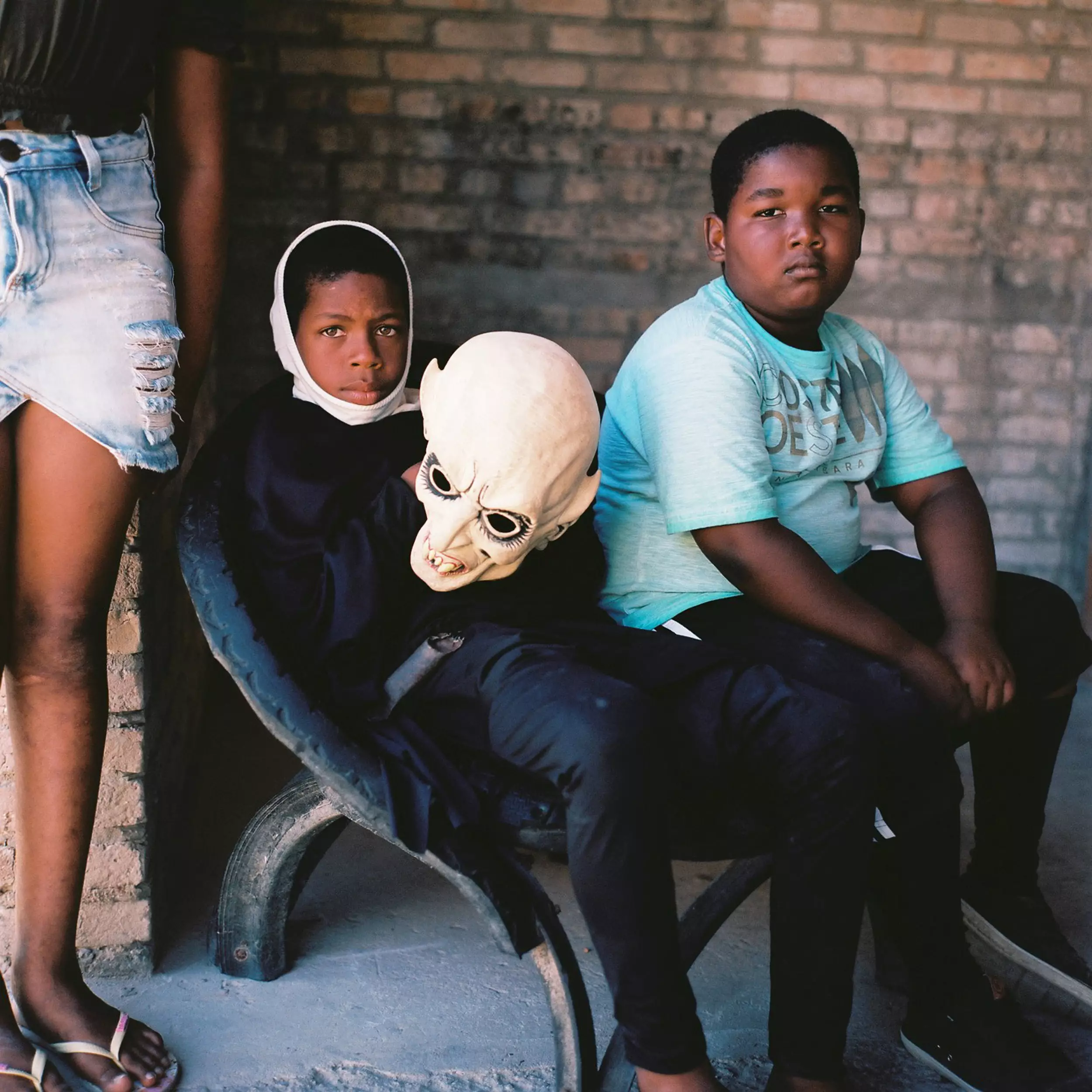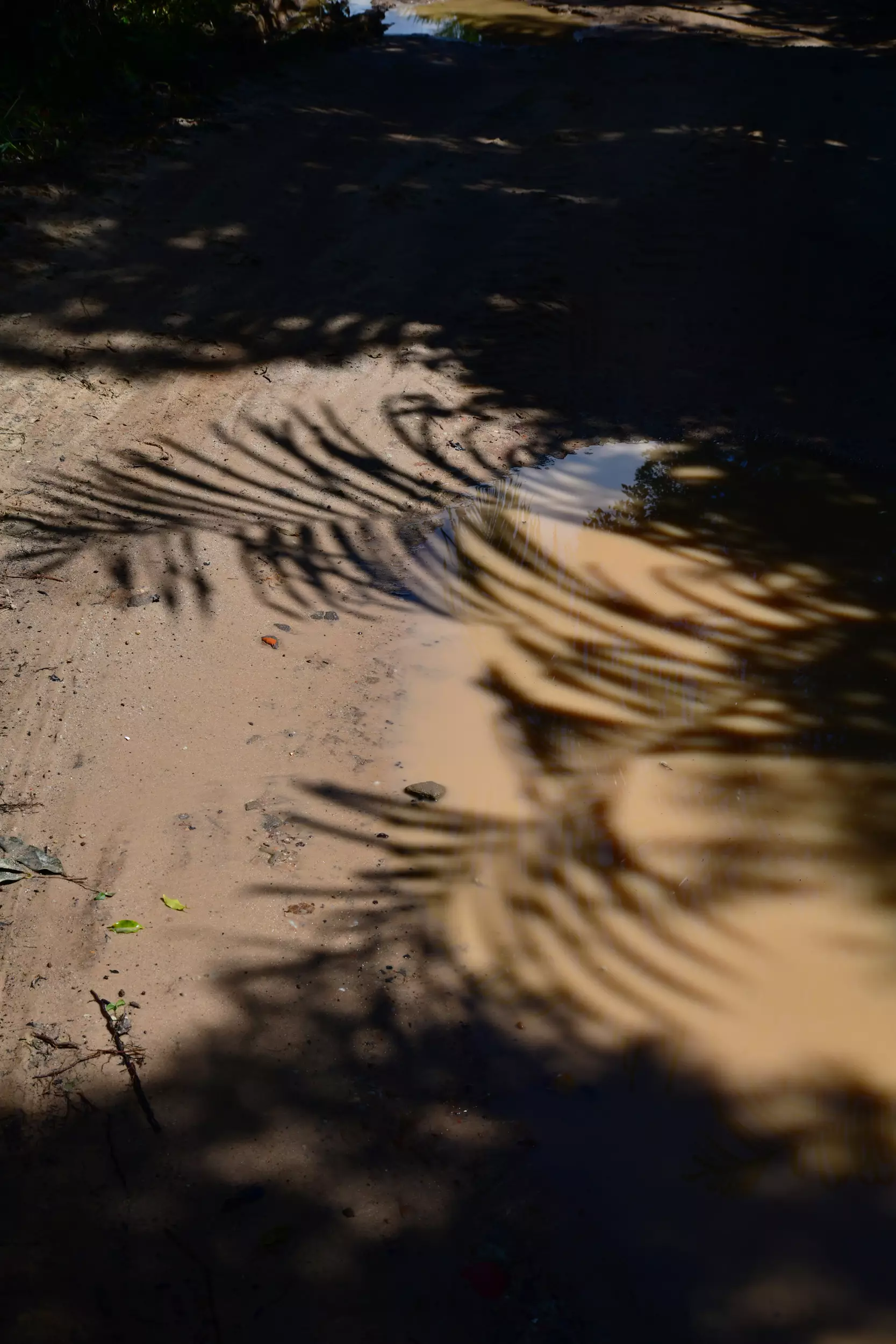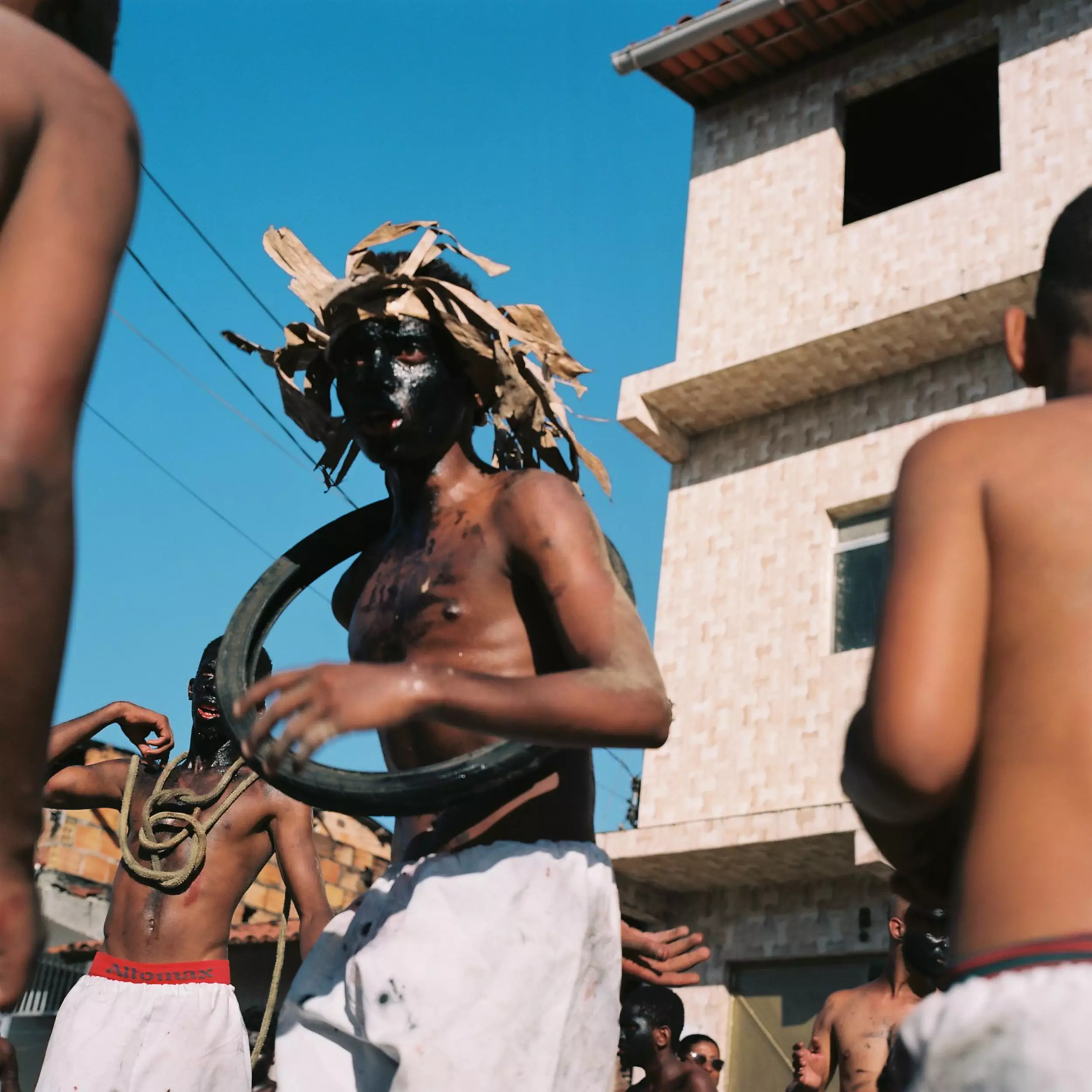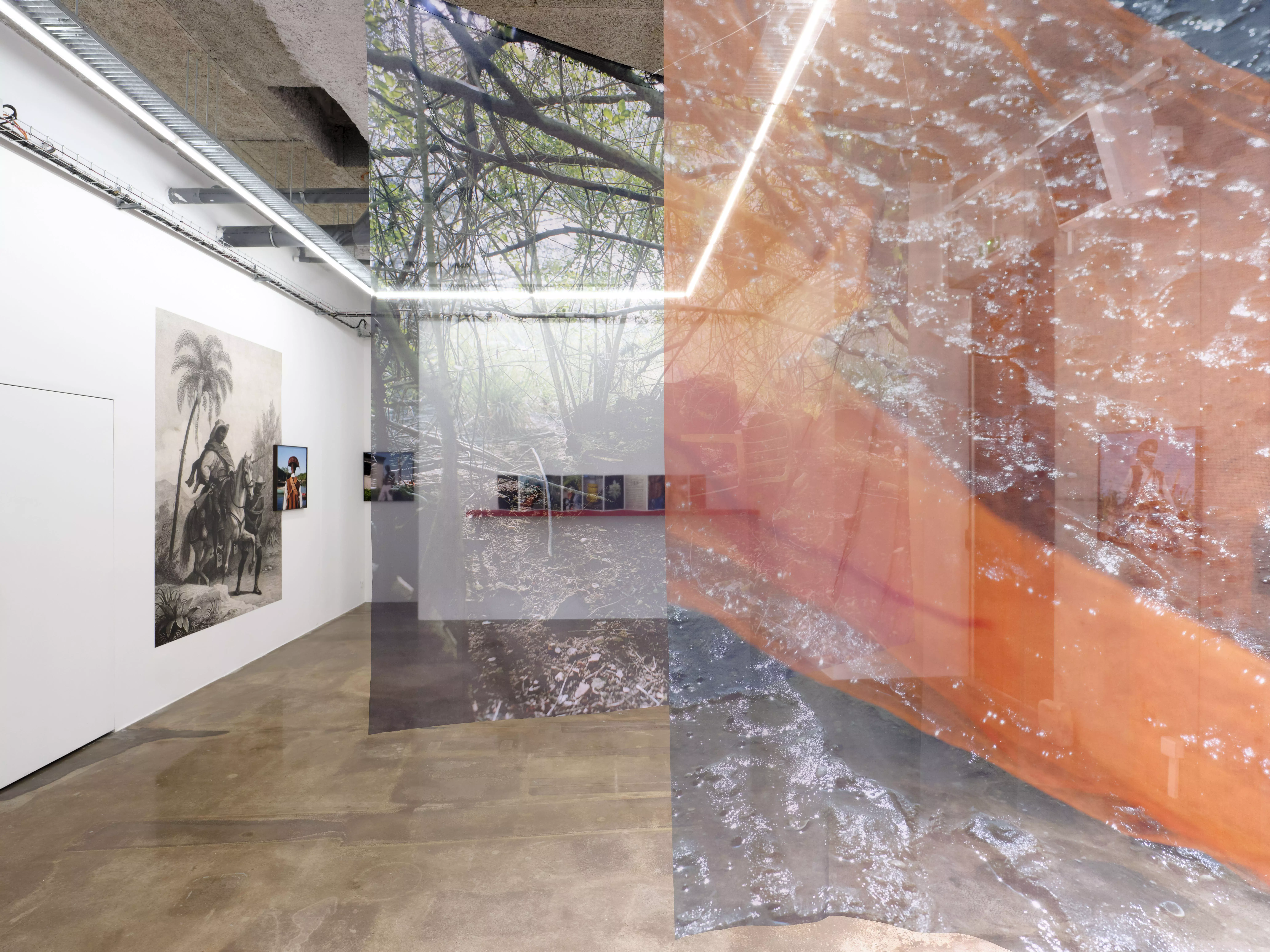
Nego Fugido
Quilombolas memories
Nego Fugido is a performative practice that takes place every year on Sundays in July in the community of Acupe, in the Baía de Todos os Santos in Brazil. Since the end of the 19th century, corresponding to the abolition of slavery in 1888, the "appearances" of Nego Fugido reenact the dehumanization of slavery and the struggle of the enslaved for their liberation.
In a temporal overlap, several historical moments are brought together to recount the experience of the abyss: from the capture of Sub-Saharan Africans in Africa by slave hunters, to the resistance of fugitive slaves in Brazil pursued by the capitão do mato (slave catcher), to the reversal of power through the revolt of the slave hunters against the capitão do mato and the entire colonial hierarchy up to the King of Portugal, whose final capitulation leads to the general emancipation of the community.
The performance seeks to produce a sovereign discourse about the self and Brazil’s past, emphasizing the fight against slavery led by the enslaved people themselves. In this sense, it creates a counter-narrative to the official history taught in Brazilian schoolbooks, which tends to highlight a top-down abolition led by Princess Isabel in 1888.
Indeed, this practice brings forth an image of the enslaved that challenges both the paternalistic discourse of the former racial democracy and certain multiculturalist narratives promoted by segments of the Black movement. Carrying with it memorial stakes regarding power relations between masters and slaves, and among subaltern classes (such as the slave hunter and the enslaved), it sheds a unique light on the legacies of slavery in Brazil today.
In the appearances of Nego Fugido, the community of Acupe celebrates the memory of the enslaved ancestors and their daily strategies leading up to emancipation: temporary escape, pooling money, etc. This shift in perspective — bringing the enslaved individual and their everyday struggle to the center of the choreographic and scenic framework — represents a significant change from the hegemonic discourse on the memory of slavery, which focuses on the heroic figures of large-scale marronage, such as Zumbi dos Palmares.
Since the 1990s, which coincided nationally with a reorganization of the movimento negro and greater visibility of Indigenous peoples' demands, Nego Fugido has been framed not only as a performative practice but also as an intellectual and political space for reflection on identity and memory. The Casa do Nego Fugido, opened in 2021, responds precisely to this need to create a space for creation, preservation, and transmission of Indigenous knowledge surrounding Nego Fugido.
In this sense, the quest for Africa appears central to the construction of a positive and legitimizing identity for Afro-descendant communities — beyond being merely a strategy in the fight for collective land use rights, particularly for quilombola communities. In this regard, the discourse produced by members of Nego Fugido looks to “Africa” as the symbolic and political framework of its legitimacy, invoking an African tradition that becomes a positive sign of social and cultural cohesion (Bastide 1960).
Nego Fugido, like other performative practices, is the result of constant negotiation between its rules and real-world adaptations. The goal of this research was precisely to try to visually represent Nego Fugido in its complexity and with respect for its members, as an organic whole, by intersecting performance and discourse — and to examine how and to what extent these two aspects feed and influence each other.
This project, carried out in collaboration with the Associação Cultural Nego Fugido, is the result of field research developed between 2022 and 2025 as part of Nicola Lo Calzo’s PhD at the École Universitaire de Recherche Humanités, Création, Patrimoine at CY Cergy Paris Université, in partnership with ENSAPC, under the supervision of Sylvie Brodziak and Corinne Diserens.
In a temporal overlap, several historical moments are brought together to recount the experience of the abyss: from the capture of Sub-Saharan Africans in Africa by slave hunters, to the resistance of fugitive slaves in Brazil pursued by the capitão do mato (slave catcher), to the reversal of power through the revolt of the slave hunters against the capitão do mato and the entire colonial hierarchy up to the King of Portugal, whose final capitulation leads to the general emancipation of the community.
The performance seeks to produce a sovereign discourse about the self and Brazil’s past, emphasizing the fight against slavery led by the enslaved people themselves. In this sense, it creates a counter-narrative to the official history taught in Brazilian schoolbooks, which tends to highlight a top-down abolition led by Princess Isabel in 1888.
Indeed, this practice brings forth an image of the enslaved that challenges both the paternalistic discourse of the former racial democracy and certain multiculturalist narratives promoted by segments of the Black movement. Carrying with it memorial stakes regarding power relations between masters and slaves, and among subaltern classes (such as the slave hunter and the enslaved), it sheds a unique light on the legacies of slavery in Brazil today.
In the appearances of Nego Fugido, the community of Acupe celebrates the memory of the enslaved ancestors and their daily strategies leading up to emancipation: temporary escape, pooling money, etc. This shift in perspective — bringing the enslaved individual and their everyday struggle to the center of the choreographic and scenic framework — represents a significant change from the hegemonic discourse on the memory of slavery, which focuses on the heroic figures of large-scale marronage, such as Zumbi dos Palmares.
Since the 1990s, which coincided nationally with a reorganization of the movimento negro and greater visibility of Indigenous peoples' demands, Nego Fugido has been framed not only as a performative practice but also as an intellectual and political space for reflection on identity and memory. The Casa do Nego Fugido, opened in 2021, responds precisely to this need to create a space for creation, preservation, and transmission of Indigenous knowledge surrounding Nego Fugido.
In this sense, the quest for Africa appears central to the construction of a positive and legitimizing identity for Afro-descendant communities — beyond being merely a strategy in the fight for collective land use rights, particularly for quilombola communities. In this regard, the discourse produced by members of Nego Fugido looks to “Africa” as the symbolic and political framework of its legitimacy, invoking an African tradition that becomes a positive sign of social and cultural cohesion (Bastide 1960).
Nego Fugido, like other performative practices, is the result of constant negotiation between its rules and real-world adaptations. The goal of this research was precisely to try to visually represent Nego Fugido in its complexity and with respect for its members, as an organic whole, by intersecting performance and discourse — and to examine how and to what extent these two aspects feed and influence each other.
This project, carried out in collaboration with the Associação Cultural Nego Fugido, is the result of field research developed between 2022 and 2025 as part of Nicola Lo Calzo’s PhD at the École Universitaire de Recherche Humanités, Création, Patrimoine at CY Cergy Paris Université, in partnership with ENSAPC, under the supervision of Sylvie Brodziak and Corinne Diserens.

